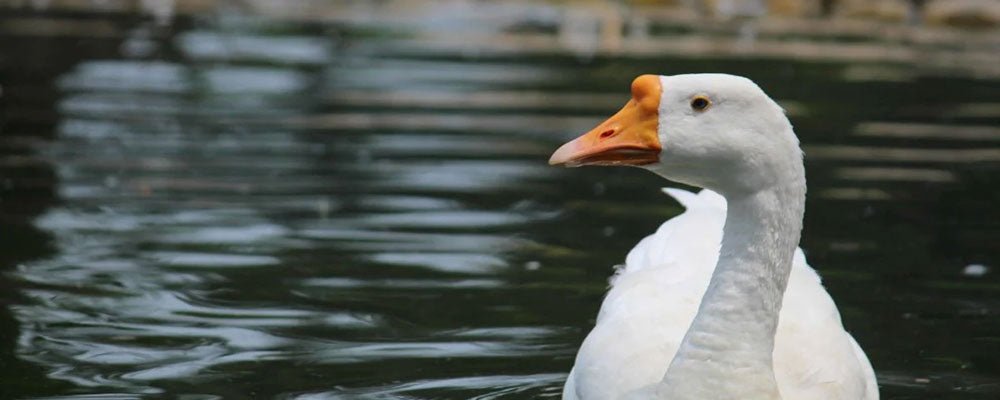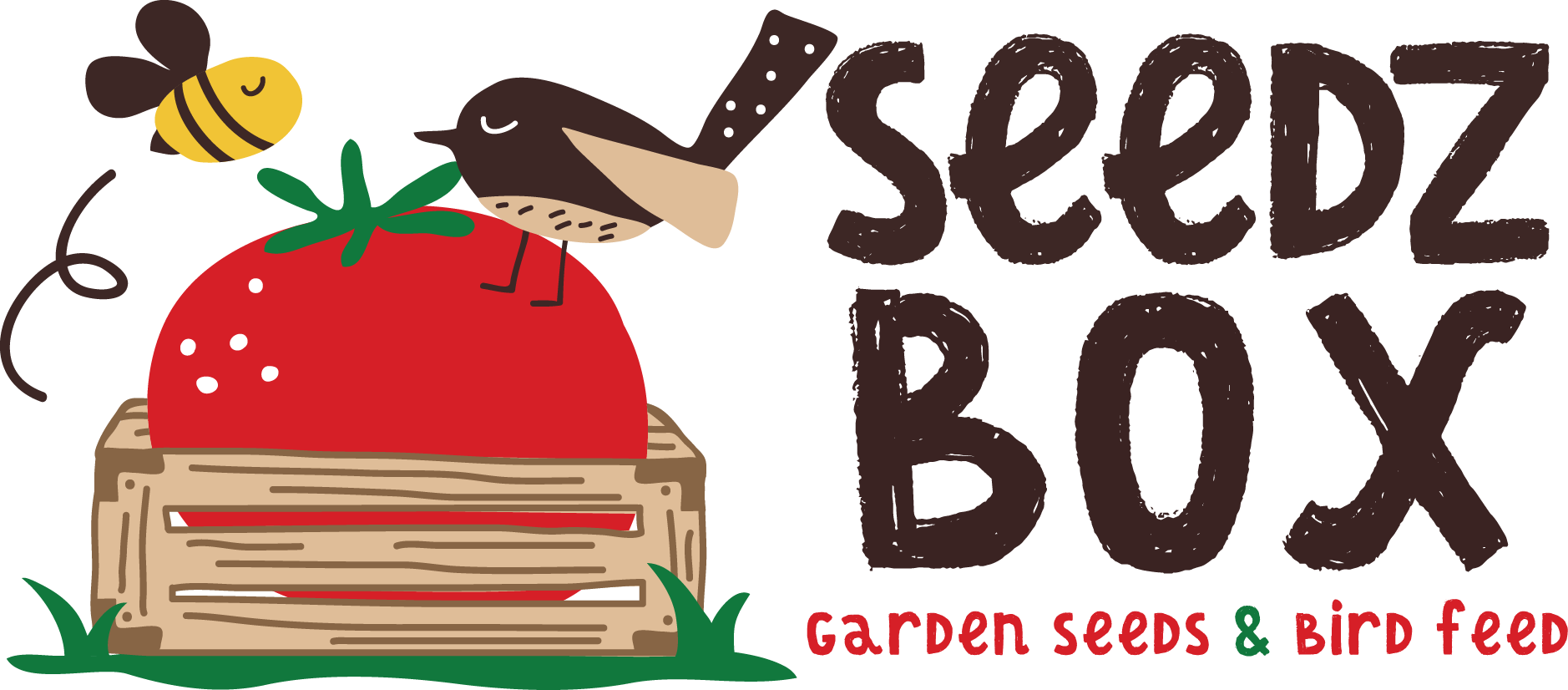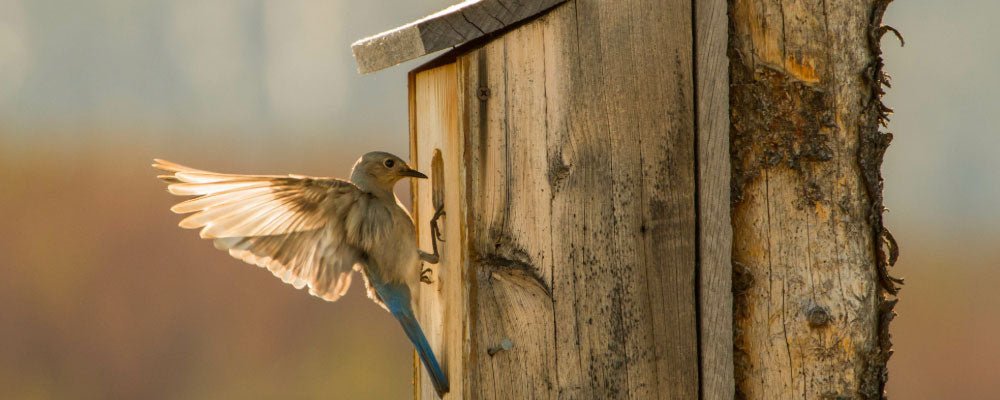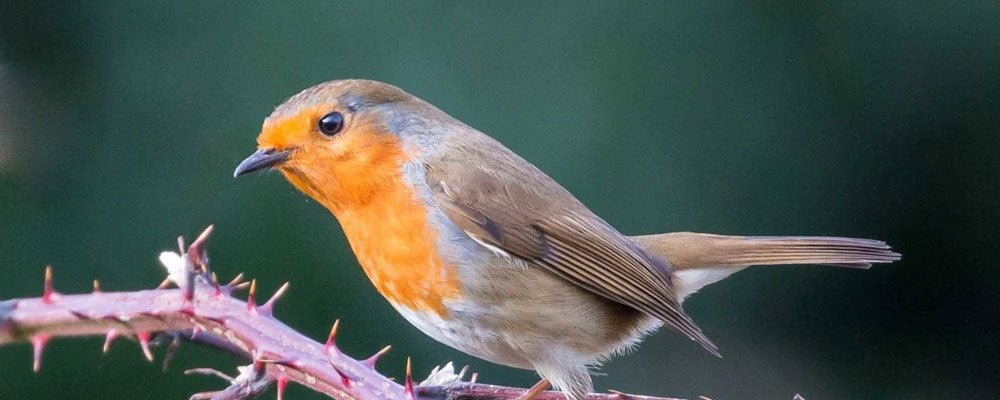
Swans, Ducks & Aquatic Birds - A Guide
Some birds are drawn to gardens with or near ponds and streams because of feeding opportunities, while others seek sanctuary from would-be predators in these surroundings.
There is a great variety of aquatic birds, but you will often find jackdaws, starlings, magpie, pigeons, coots, mallard ducks, tufted ducks, mute swans, wigeons, pintails, wood duck and house sparrows.
A wide variety of birds haunt streams, ponds and lakes, but not all are easy to observe because of their camouflage as the dense plant growth often found by water also provides concealment, so you need to keep an eagle eye out.
Aquatic species can be attracted to your garden by the presence of even a small water feature, such as a pond or bog. Indeed, these water-loving aquatic birds, swans and ducks can often observed out in the open, but when frightened will scuttle away to the safety of the reeds or dense vegetation by the water’s edge.
How aquatic birds find food?
Many predatory birds hunt in wetland habitats including garden ponds, swooping low over the water to seize fish by day or even at night. Some fish-eating birds, notably kingfishers (alcedinidae), dive to seize their prey, which they may feed to their young in nest sites built into the banks of streams.
Other hunters rely on different strategies to catch food. Herons (Ardeidae) lurk by the water's edge and seize fish that swim in range of their sharp, powerful bills. Rails (rallidae) often forage by slow-flowing or still water with well-established reed beds, but these birds are shy by nature and their mottled plumage and slim body shape make them hard to spot.
How do aquatic birds nest?
Some birds are drawn to ponds, bogs or streams in gardens not so much by food but by the nesting opportunities there. For example, Swallows (hirundo rustica) sometimes collect damp mud from the water's edge to make their nests, and may also catch midges flying above the water surface.
Many birds that actually nest by ponds and streams, such as ducks and moorhens, seek seclusion when breeding. They hide their nest away, or make it hard to reach by choosing a spot surrounded by water. Swans and geese have actually been known to nest by large ponds in gardens as well.
Mallard Ducks (anas platyrhynchos)
Around 60cm in length on average, Mallards are found throughout the northern hemisphere including Western Europe and North Africa. Their nest normally consists of a scrape lined with down feathers. They normally nest with 7-16 eggs, which buff to a greyish-green colour and their diet is mostly plant matter, but also some inveterbrates.
These ducks are a common sight by lakes, rivers and canals in towns and cities. They are also seen in gardens with or near ponds and streams. They may congregate in quite large flocks, especially outside the breeding season, but are most evident in the spring, when groups of unpaired males chase potential mates.
The nest is often constructed close to water and is frequently hidden under vegetation, including in urban gardens. These birds feed both on water, upending themselves or dabbling at the surface, and on land.
How to identify Mallard Ducks and what do they look like?
Mallards have a metallic green head with a white ring around the neck. Chest is brownish, underparts are grey, and a blackish area surrounds the vent. Bluish speculum in the wing, most evident in flight, shore bordered by black- and-white stripes. Hen is brownish-buff overall with darker patterning, and displays the same wing markings as drake. Hen's bill is orange, whereas that of male in eclipse plumage (outside the breeding season) is yellow, with a rufous tinge to the breast.
Mute Swans (cygnus olor)
Related to geese and ducks, mute swans are the quintessential bird to be found on lakes of both stately homes and city parks. There is something so majestic and almost magical about swans, so it is not surprise that swans feature heavily in mythology. For example, in Greek mythology, the story of Leda and the Swan recounts that Helen of Troy was conceived in a union of Zeus disguised as a swan and Leda, Queen of Sparta. Another ancient belief was that, upon death, the mute swan would sing beautifully, hence why we have the phrase “swan song”.
Back in the 17th century, swan meat was prized as a luxury meat, but fortunately swans are now protected by Royal decree. Indeed, the Crown retains the right to ownership of all unmarked mute swans in certain stretches of the River Thames and it is an offence to injure, take or kill a wild swan under the Wildlife and Countryside Act 1981
Mute swan range in height from 140 to 160 cm with a 200 to 240 cm wingspan. Males are larger than females and have a larger knob on their bill. Swans eat aquatic vegetation, which their long necks equip them to take from the riverbed, as well as he molluscs, small fish, frogs and worms. As such, grain, such as wheat, and vegetable matter, especially lettuce and potatoes, can be fed to swans.
Swans usually mate for life, although “divorce” sometimes occurs, particularly following nesting failure, and if a mate dies, the remaining swan will take up with another. Mute Swan nests are normally two to three metres on large mounds that they build with waterside vegetation in shallow water on islands in the middle or at the very edge of a lake with the main purpose being to accommodate the eggs in a reasonably secure location, where the male swan and female swan can guard and incubate the eggs in clutch ranges from 3 to 8 eggs. Both sexes defend the nest ferociously. These largish birds are capable of inflicting painful blows with their wings on intruders, so be careful not to venture too close.
Eurasian Dipper Bird (cinclus cinclus)
Dippers are sometimes seen in gardens near streams or rivers in northern and western Britain. The bird's name comes from the way in which it bows, or 'dips' its body, often on a boulder in the middle of a stream, rather than describing the way it dives into the water.
20cm in height, dippers are very adept at steering underwater with their wings, and can even elude birds of prey by plunging in and disappearing from view, before surfacing again farther downstream. Mainly living in reed beds and sedge, they feed mainly on aquatic invertebrates caught underwater, sometimes emerging with caddisfly larvae and hammering them out of their protective casings on land.
Breeding pairs work together to construct their nest, which may be concealed under a bridge or in a hole in a rock. The hen usually sits on the nest alone, normally 5-16 whitish eggs with reddish-brown spotting and the youngsters will fledge after about three weeks.
How to identify Eurasian Dippers and what do they look like?
Dipper birds have prominent white throats and chest. Brown on head extends below the eyes, rest of the plumage is dark. Young birds are greyish with mottling on their underparts. Some regional variation, usually relating to the extent of chestnut below the white of the chest. Dark bill, legs and feet. Sexes are alike.
Water Rail Bird (railus aquaticas)
Water rails frequent ponds, reed beds and bog gardens, but their skulking habits make them hard to notice. Being naturally very adaptable, these rails have an extensive distribution from Iceland to Siberia and are even recorded as foraging in tidal areas surrounded by seaweed in the Isles of Scilly off south-west Britain.
In parts of their range they migrate to warmer climates for the winter to feed on mainly animal matter, but also some vegetation. They are very territorial when breeding and, as in other related species, their chicks hatch in a precocial state in a cup-shaped nest made from vegetation in batches of 5-16 whitish eggs. Calls include squealing and pig-like grunts.
How to identify Water Rails and what do they look like?
26cm in height, Water Rail birds have prominent, long, reddish bills with bluish- grey breast and sides to the head. Narrow brownish line extending over the top of the head down the back and wings, which have black markings. Black-and-white barring on the flanksand underparts. Short tail with pale buff underparts. Sexes are alike.
Coot Bird (fulica atra)
Coots are found in much of Europe, including Britain, expect for the Far North, they are also found in North Africa as well and eastwards to Asia and are even in present in Australia and New Zealand.
Coots may set up home by large ponds and lakes in parks and gardens and prefer slow-flowing and still stretches of water. Open stretches of water are important to them, enabling them to dive in search of food and during the winter, these birds may sometimes assemble in flocks on lakes that are unlikely to freeze over.
Coots may find their food on land or in the water, although they will dive only briefly in relatively shallow water and have a varied diet of various kinds of plant and animal matter.
Coots have between 1 and 14 eggs at a time, which buff to brown with dark markings. Nesting in a pile of reeds at the water’s edge, pairs are very territorial during the breeding season, attacking the chicks of other coots that venture too close and even their own chicks, which they grab by the neck. The young usually respond by feigning death, and this results in them being left alone.
How to identify Coots and what do they look like?
At an average height of 42cm, Coots have a plump, sooty-grey body with a black neck and head. Bill is white with a white frontal plate. The iris is a dark brownish colour. White trailing edges of the wings evident in flight. Long toes have no webbing. Sexes are alike.
Moorhen Bird (gallinula chloropus)
Even a relatively small garden pond can attract moorhens,and they may nest in with dense vegetation near the pond. Although usually found gardens in areas of fresh water, they are occasionally seen in brackish areas.
Their long toes enable them to walk over aquatic vegetation. These birds feed on the water or on land and their diet varies according to the bulk of season, although seeds of various types make up the bulk of their food.
Nesting in a domed structure hidden in reeds, they can have between 2 and 17 light green eggs with dark markings. If danger threatens, moorhens will either dive or swim underwater. They are adept divers, remaining submerged by grasping on to underwater vegetation with their their food. In public parks, Moorhens can become quite tame, darting in to obtain food provided for the ducks.
How to identify Moorhens and what do they look like?
This aquatic bird has a slate-grey head, back and underparts. Greyish-black wings. A prominent white line runs down the sides of the body. The area under the tail is white and has a black central stripe. The greenish-yellow legs have a small red area at the top. The bill is red apart from a yellow tip. Sexes are alike.



Leave a comment
This site is protected by reCAPTCHA and the Google Privacy Policy and Terms of Service apply.